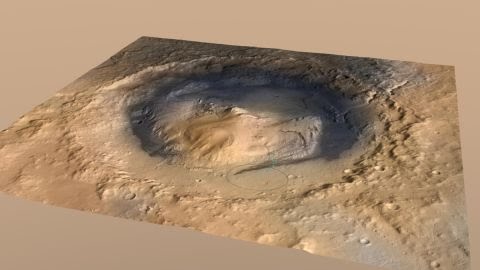
The water on Mars didn’t run dry all at once, study finds
Mars did not dry up all at once, but fluctuated between dry spells and wetter times before becoming the arid planet it is today, a new study finds.
Previous studies havefound that Mars was once wet enough to cover its entire surface with an ocean containing about half as much water as Earth’s Atlantic Ocean. However, the Red Planet is now an extraordinarily arid planet, a thousand times drier than the driest parts of the Atacama Desert in Chile, the driest place on Earth, according to NASA.
To shed light on how Mars dried up, scientists analyzed data from NASA’s Curiosity rover on the Red Planet. The machine is currently exploring the base of Mount Sharp, a giant mound about 3.4 miles (5.5 kilometers) high rising up from the center of 96-mile-wide (154 km) Gale Crater.
The wet (and dry) history of Mount Sharp on Mars
Officially known as Aeolis Mons, Mount Sharp “is a giant mound of sediment — rocks deposited by wind and water,” study lead author William Rapin, a planetary scientist at the University of Toulouse in France, told Space.com. Prior work dated its base as 3.6 billion years old, placing it within Mars’ Hesperian period, when the planet was shifting from wet to dry.
Spacecraft in orbit around Mars had already provided clues about the mineral composition of the slopes of Mount Sharp. Now, using the Remote Micro-Imager telescope on Curiosity’s ChemCam instrument, Rapin and his colleagues examined the mound’s steep terrain to yield insights on the distant past of the Red Planet.
Over vast amounts of time, geological events can deposit layers, or strata, of rock — for instance, volcanic eruptions can lay down thin layers of ash, or thick layers of lava. Scientists can analyze strata to deduce the events that created them, shedding light on the ancient history of an area, or an entire planet.







